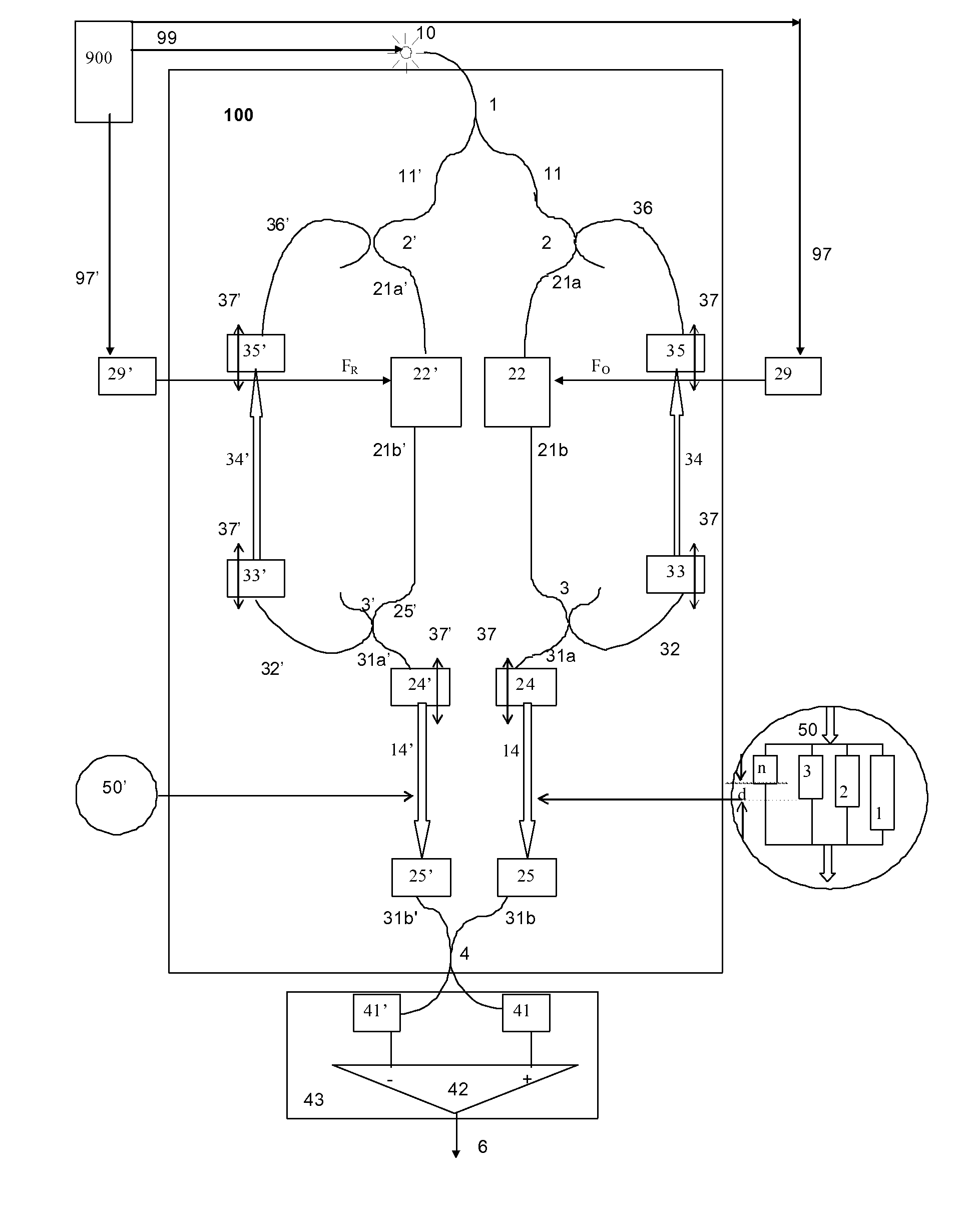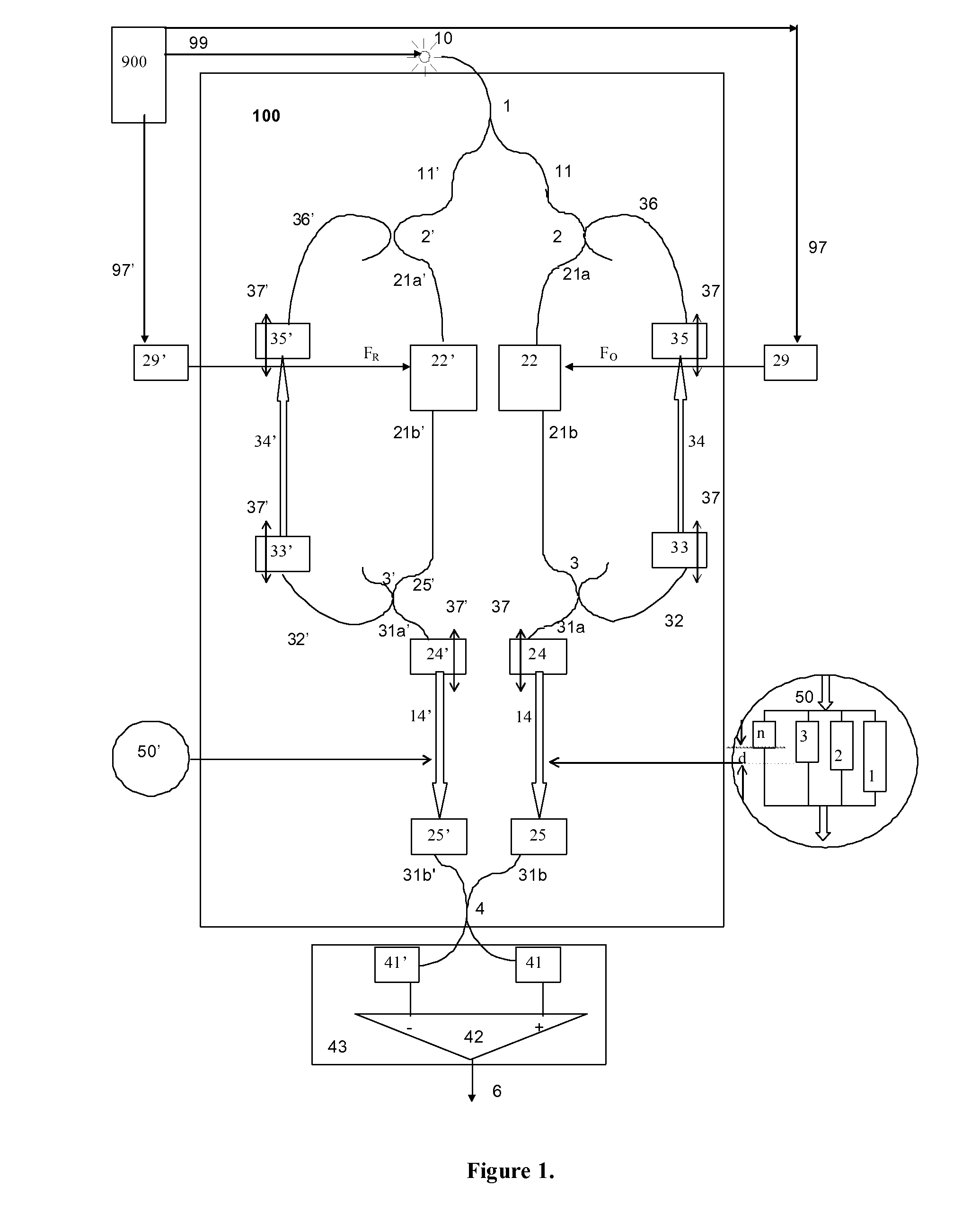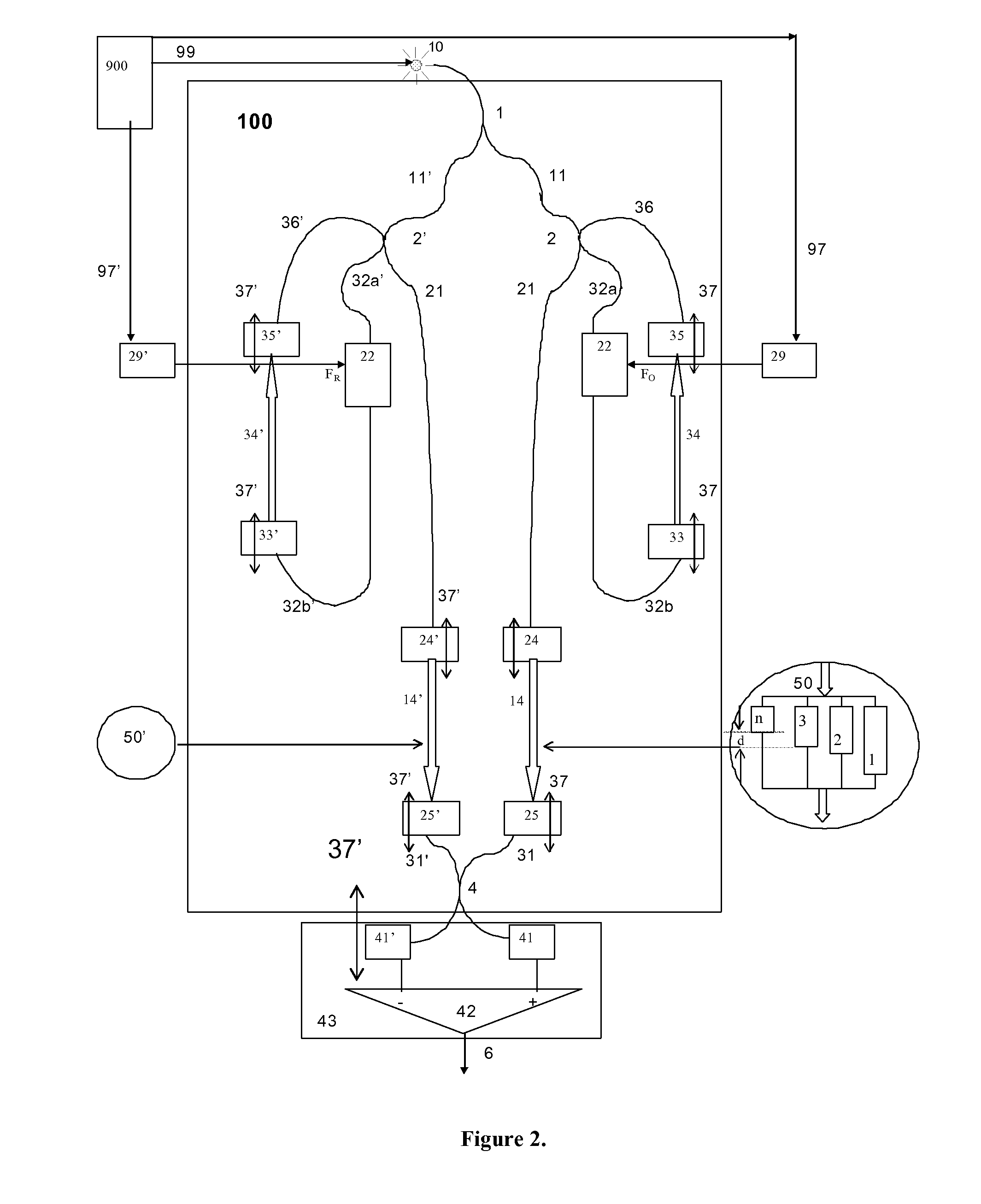Multiple path interferometer and method
a multi-path interferometer and path technology, applied in the field of optical interferometers, can solve the problems of inability to use incompatible methods with dynamic focus, and inability to achieve high numerical aperture microscope objectives, so as to speed up the acquisition of b-scan oct images
- Summary
- Abstract
- Description
- Claims
- Application Information
AI Technical Summary
Benefits of technology
Problems solved by technology
Method used
Image
Examples
Embodiment Construction
[0049]Various features of the present invention, as well as other objects and advantages attendant thereto, are set forth in the following description and the accompanying drawings in which like reference numerals depict like elements.
[0050]All lengths below are optical, they include the index of refraction of the fibre link or air or of the object.
[0051]FIG. 1 shows, in diagrammatic form, the main elements of the multipath recirculating interferometer 100, here light from an optical source, 10, is divided into two beams, object and reference, at the output of a first splitter, 1, wherefrom light from one of its output feeds the main object path formed from path 11, of optical length s11, towards a 2nd splitter, 2, via another part of the main object path, 21a, of length d21a, towards an object modulator 22, which can be a frequency shifter or a phase modulator, of optical path length, d22, modulated at a frequency FO, along path 21b, of length d21b, towards the 3rd object splitter,...
PUM
 Login to View More
Login to View More Abstract
Description
Claims
Application Information
 Login to View More
Login to View More - R&D
- Intellectual Property
- Life Sciences
- Materials
- Tech Scout
- Unparalleled Data Quality
- Higher Quality Content
- 60% Fewer Hallucinations
Browse by: Latest US Patents, China's latest patents, Technical Efficacy Thesaurus, Application Domain, Technology Topic, Popular Technical Reports.
© 2025 PatSnap. All rights reserved.Legal|Privacy policy|Modern Slavery Act Transparency Statement|Sitemap|About US| Contact US: help@patsnap.com



